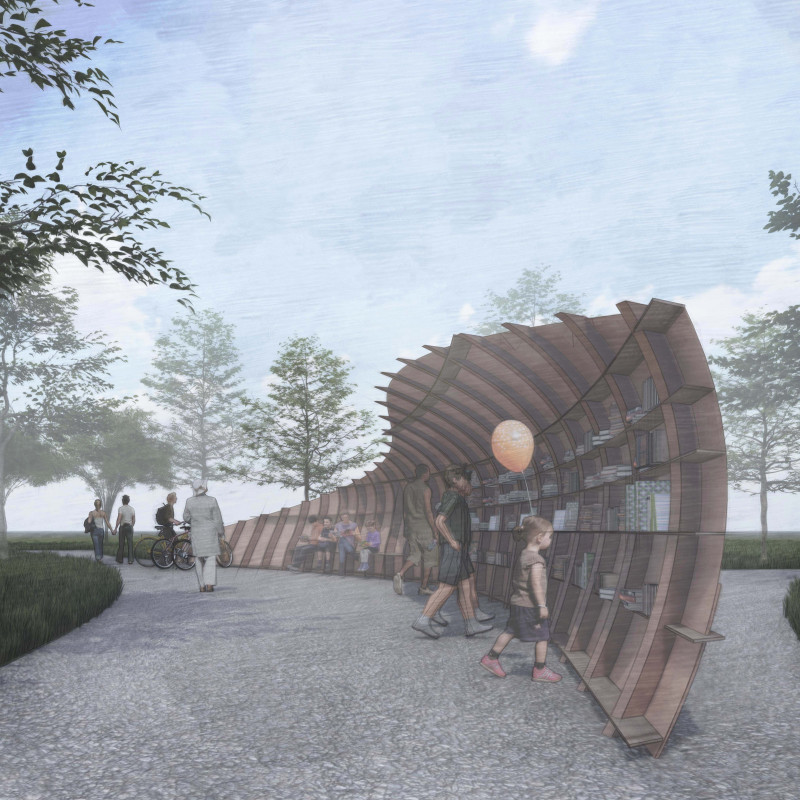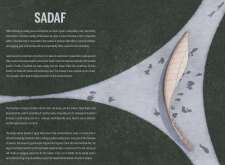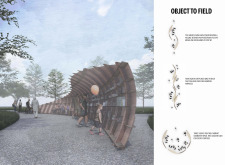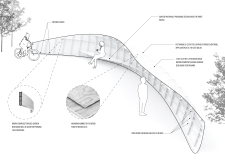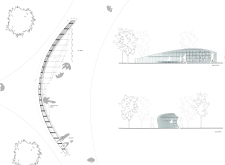5 key facts about this project
Sadaf is a project that effectively addresses the need for reading spaces in Egypt. The location captures a sense of cultural richness, serving as a response to the scarcity of public libraries. Dedicated to fostering literary engagement, Sadaf combines indoor and outdoor elements to create a welcoming environment. Inspired by the shape of a seashell, the design encourages connection with nature while providing a cozy space for readers.
Design Concept
The overall design is informed by the idea of creating an engaging atmosphere that promotes both solitude and community interaction. Named after the Arabic word for "seashell," the structure's curved roof signifies safety, enveloping users in a comfortable setting. This focus on blending built environments with natural surroundings enhances comfort and encourages a love for reading.
Spatial Configuration
Sadaf features a well-thought-out spatial arrangement that caters to different user preferences. The layout includes shaded areas where small groups of 3 to 4 people can sit, promoting conversations and exchanges. Attention has been given to circulation within the space to ensure that movement feels easy and natural. This careful organization allows for meaningful interactions, enriching the reading experience.
Materiality
Wood timber and plywood are the primary materials used in the construction of Sadaf. These materials not only support sustainability but also contribute to a warm, inviting atmosphere. By using timber, the design draws upon the natural qualities of the material, creating a tactile connection that resonates with users. The choice of materials is a key element in achieving the overall aesthetic and functionality of the space.
Community Engagement
Sadaf serves as more than just a reading area; it is also a hub for community activities. The design allows for multiple Sadafs to be placed near each other, creating larger exhibition areas that can accommodate thousands of books. This flexibility positions Sadaf as a center for cultural exchanges, reinforcing its role in encouraging literacy and community involvement in Egypt.
Large windows incorporated into the design allow light to filter in, creating a dynamic interplay of light and shadow that enhances the reading experience. The gentle curves of the roof guide the eye, inviting users to explore both the interior and the surrounding environment.


